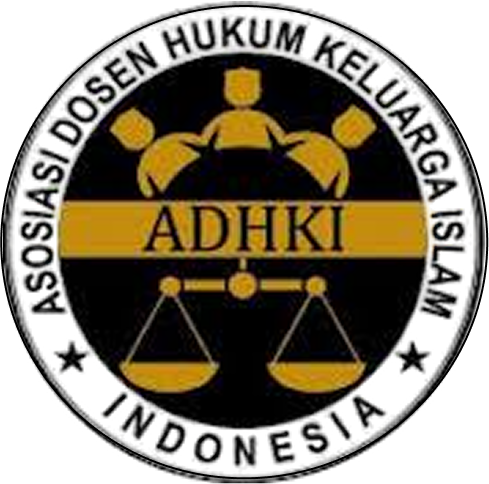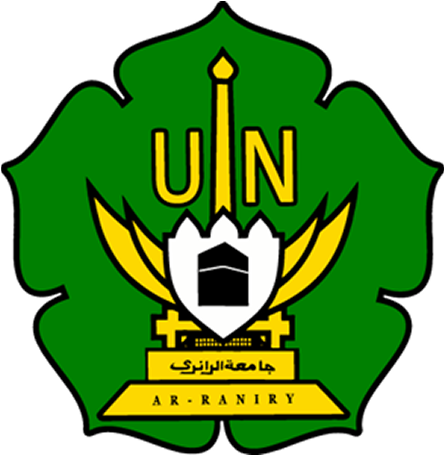Scrapping Menstrual Blood Stains According to South Sulawesi Ulama and Intellectual from Perspective of Ma‘āni-Ḥadīth
DOI:
https://doi.org/10.22373/nbvyjv53Keywords:
Contextual interpretation, hadith comprehension, ulama-intellectual, scrapping menstrual blood stains, and Islamic Law.Abstract
Scrapping menstrual blood stains is prescribed as a way to purify clothing contaminated by menstrual blood. This research explores the rulings on scraping menstrual blood stains from the perspectives of female ulama and intellectual in South Sulawesi, viewed through the lens of maʻānī al-hadīth. This study employs a qualitative library research approach, utilizing maʻānī al-hadīth. Data is gathered from hadith collections that discuss the practice of scraping menstrual blood stains. Interviews were conducted to gain additional perspectives from ulama and intellectuals in South Sulawesi. The results indicate that a contextual analysis of hadith reveals an injunction to purify clothing affected by menstrual blood, specifically by scraping off the residue adhering to the fabric. According to the ulama and intellectuals of South Sulawesi, a contextual understanding of hadith related to scraping menstrual blood stains permits the use of cleaning agents, such as detergents, to maximize efforts to clean stains or menstrual blood that adheres to the fabric. Furthermore, if the stain is irremovable, the fabric or clothing may be used for prayer, demonstrating a leniency in religious practice. In the context of maʻānī al-ḥadīth, a textual understanding can create a rigid legal character, potentially diminishing the universal message of the hadith, while a contextual approach can reveal substantive values that remain relevant in modern society.
References
Journals and Books
Abū Dāwud, Sulaimān ibn al-Asyʻaṡ ibn Isḥāq ibn Basyīr ibn Syidād ibn ʻAmru al-Azdī as-Sijistānī. “Sunan Abī Dāwud.” In 1-4, edited by Muḥammad Muḥyī al-Dīn ʻAbd al-Ḥamīd. Beirut: al-Maktabah al-ʻAṣriyyah, n.d. https://shamela.ws/book/1726.
Ahmad, Arifuddin. Metodelogi Pemahaman Hadis: Kajian Ilmu Ma’ani Al-Hadis. Edited by Zulfahmi Alwi. 2nd ed. Makassar: Alauddin University Press, 2013.
Alwi, Zulfahmi, et.al., “The Anomaly of Good-Looking: The Relationship between Spirituality and Extremism on Hadith and Social Religious Perspective,” Qudus International of Islamic Studies 9, No. 1 (2021). DOI: http://dx.doi.org/10.21043/qijis.v9i2.10476.
Al-‘Asqalānī, Aḥmad bin ‘Alī bin Ḥajar Abū al-Fadl. “Fatḥ Al-Bārī Syarḥ Ṣaḥīḥ Al-Bukhārī.” In 1-13. Beirut: Dār al-Ma‘rifah, 1379.
Al-Bukhāri, Abū ʻAbdillāh Muḥammad ibn Ismāʻīl ibn Ibrāhīm ibn al-Mugīrah al-Juʻfī. “Al-Jāmiʻ Al-Musnad Al-Ṣaḥīḥ Al-Mukhtaṣar Min Umūr Rasūl Allāh Ṣallā Allāh ʻalaih Wasallam Wa Sunanih Wa Ayyāmih.” In 1-9, edited by Muḥammad Zuhair ibn Nāṣir al- Nāṣir. Dār Ṭauq al-Najāt, 1422. https://shamela.ws/book/1681.
Al Khanafi, Muh. Imam Sanusi and Muhammad Lutfianto, ‘Pendekatan Hermeneutika Dalam Memahami Hadis’, Musnad: Jurnal Ilmu Hadis 2, No. 2 (2024). https://doi.org/10.56594/musnad.v2i2.317.
Al-Maḥallī, Jalāluddīn Muḥammad bin Aḥmad, and Jalāluddīn ‘Abdurraḥman bin Abī Bakr As-Suyūṭī. Tafsīr Jalālain. Kairo: Dār al-Ḥadīṡ, n.d.
Al-Nawawī, Abū Zakariyyā Muḥyī al-Dīn Yaḥyā bin Syarraf. “Al-Minhāj Syarah Ṣaḥīḥ Muslim Bin Al-Ḥajjāj.” In 1-18, 2nd ed. Beirut: Dār Iḥyā’ at-Turāṣ al-‘Arabī, 1392.
Al-Yamanī, Muḥammad bin ‘Alī bin Muḥammad bin ‘Abdullāh asy-Syaukānī aṣ-Ṣan‘ānī. “Fatḥ Al-Qadīr.” In 1, 1st ed., 1–9. Damaskus - Beirut: Dār Ibn Kaṡīr – Dār al-Kalim aṭ-Ṭīb, 1414.
At-Tūnisī, Muḥammad at-Ṭāhir bin Muḥammad bin Muḥammad at-Ṭāhīr bin ‘Āsyūr. “At-Taḥrīr Wa at-Tanwīr–Taḥrīr Al-Ma‘nā as-Sadīd Wa at-Tanwīr Al-‘Aql Wa Al-Jadīd Min Tafsīr Al-Kitāb Al-Majīd.” In 2, 364–69. Tunisia: Dār at-Tunīsiyyah li an-Nasyr, 1984.
Amin, Kamaruddin, et.al., “Non-Muslim (Western) Scholars' Approach to Hadith. An Analytical Study on the Theory of “Common Link and Single Strand,” Al-Jamiah: Journal of Islamic Studies 61, No. 1 (2002). DOI: https://doi.org/10.14421/ajis.2002.11.34-55.
Azzam, Ummu. La Tahzan Untuk Wanita Haid. 1st ed. Jakarta: QultumMedia, 2012.
“HaditsSoft.” Home Sweet Home, 1440. https://archive.org/details/SetupHaditsSoft.
Ismail, M. Syuhudi, Hadis Nabi Yang Tekstual Dan Kontekstual: Telaah Ma’ani Al-Hadits Tentang Ajaran Islam Yang Universal, Temporal Dan Lokal, Jakarta: Bulan Bintang, 2009.
Khomaeny, Elfan Fanhas Fatwa, and Chandrawaty. Pesan Cinta Untuk Anakku. Edited by Siti Anisah. 1st ed. Tasikmalaya: Edu Publisher, 2019.
Kesturi, Ganis and Muhammad Irfan Helmy, “The Understanding of Hadith Sadaqah and Its Implementation on Social Empowerment: A Research on Jum’ah Berkah Tradition in Wonogiri Society,” Jurnal Studi Ilmu-Ilmu Al-Qur’an dan Hadis 23, No. 2 (2022). DOI: https://doi.org/10.14421/qh.2022.2301-04.
Lajnah Pentashihan Mushaf Al-Qur’an. “Qur’an Kemenag.” Kementerian Agama Republik Indonesia, 2019. https://quran.kemenag.go.id/.
Masruhan Masruhan and Muh. Fathoni Hasyim, “The Contribution of Muslim Scholars and Islamic Social Organizations in Developing Ḥadith Studies in Indonesia,” Ulumuna: Journal of Islamic Studies 28, No. 2 (2024). DOI: https://doi.org/10.20414/ujis.v28i2.1007.
Masruhan Masruhan, "The Unprecedented Contextual Interpretation of The Misogynic Hadith at The Reformist PERSIS Pesantren In Bangil,” Journal of Indonesian Islam 13, No. 2 (2019). DOI: 10.15642/JIIS.2019.13.2.480-504.
Nurhikmah, Meli, et.al., "Analisis Haid Dan Nifas Dalam Perspektif Tafsir Al-Kabir Mafatihul Ghaib’, Al-Bayan: Jurnal Ilmu Al-Qur’an Dan Hadist 8, No. 2 (2025). https://doi.org/10.35132/albayan.v8i2.1276.
Mustaqim, Abdul, Ilmu Ma`ânil Hadîts: Paradigma Interkoneksi Berbagai Metode dan Pendekatan dalam Memahami Hadis Nabi. Yogyakarta: Idea Press, 2016.
Rahmanini, Aulia, et.al., "Memahami Hadis Dalam Perspektif Sains Modern: Kajian Teori Dan Metode’, Substantia: Jurnal Ilmu-Ilmu Ushuluddin 26, No, 2 (2024). https://doi.org/10.22373/substantia.v26i2.24039.
Risdahyanti, Risdahyanti. “Hadis Tentang Mengerik Noda Haid Dalam Kitab Nail Al-Auṭār Karya Asy-Syaukānī.” Universitas Islam Negeri Alauddin Makassar, 2022. https://repositori.uin-alauddin.ac.id/22332/.
Rizal, Fauzi. “Metode Imam Asy-Syaukani Dalam Menyusun Kitab Nailul Autar Syarh Muntaqal-Akhbar.” Studi Multidisipliner: Jurnal Kajian Keislaman 5, no. 2 (2018). https://doi.org/10.24952/multidisipliner.v5i2.1113.
Sagir, Akhmad, “Indonesian Hadith Scholars’ Contribution to The Establishment of Hadith Authority In Malay Archipelago,” Journal of Indonesian Islam 18, No. 2 (2024). Doi: 10.15642/Jiis.2024.18.2.532-557
Tangngareng, Tasmin, et.al., “Haid Perspektif Al-Qur’an (Analisis Terhadap Ayat Kesehatan Reproduksi Wanita QS. Al-Baqarah/2: 222-223).” Jurnal Ushuluddin: Media Dialog Pemikiran Islam 25, no. 2 (2023). https://doi.org/https://doi.org/10.24252/jumdpi.v25i2.39305.
Tangngareng, Tasmin, et.al., “Interpretation of the Hadith Regarding the Command to Wipe the Khuf: Study of AGH. Lanre Said’Work in the Islamic Law Perspective.” Samarah: Jurnal Hukum Keluarga Dan Hukum Islam 8, no. 2 (2024). https://doi.org/http://dx.doi.org/10.22373/sjhk.v8i2.20401.
Taufiq, Muhammad and Tgk. Syarkawi, ‘Fleksibilitas Hukum Fiqh Dalam Merespons Perubahan Zaman’, Jurnal Al-Nadhair 1, No. 1 (2022). https://doi.org/10.61433/alnadhair.v1i01.7.
Majid, Abdul, et.al., “The Method in Understanding Hadith Through Ijmā' and Its Implications for Islamic Law in Indonesia: Studies on the Hadiths of the Month of Qamariya,” Samarah: Jurnal Hukum Keluarga dan Hukum Islam 7, No. 1 (2024). DOI: https://doi.org/10.22373/sjhk.v7i1.12383.
Ulum, A. R. Shohibul. Fiqih Seputar Wanita. Yogyakarta: Anak Hebat Indonesia, 2021.
Widad, Sofiatul. “Konsepsi Saat Masa Menstruasi Berdasarkan Perspektif Fiqih Dan Medis.” Oksitosin: Jurnal Ilmiah Kebidanan IV, no. 1 (2017): 14–28. https://journal.ibrahimy.ac.id/index.php/oksitosin/article/view/372.
Wasman Wasman, et.al., “A Critical Approach to Prophetic Traditions: Contextual Criticism in Understanding Hadith,” Al-Jamiah: Journal of Islamic Studies 61, No. 1 (2023). DOI: https://doi.org/10.14421/ajis.2023.611.1-17.
Interviews:
Interview with Darsul S. Puyu, Professor of Hadith, UIN Alauddin Makassar, September 28, 2024.
Interview with Muammar Bakry, Secretary of the South Sulawesi Ulema Council, October 16, 2024.
Interview with Aisyah Arsyad, Lecturer, UIN Alauddin Makassar, August 26, 2025.
Interview with Mahmuddin, Professor and Lecturer of Hadith, UIN Alauddin Makassar, October 24, 2024.
Interview with Asiqah Usman Ali, Lecturer, UIN Alauddin Makassar, August 27, 2025
Downloads
Published
Versions
- 2025-09-14 (4)
- 2025-09-14 (3)
- 2025-09-14 (2)
- 2025-09-14 (1)
Issue
Section
License
Copyright (c) 2025 Muhammad Ali, Risdahyanti Risdahyanti, Silfi Khaerah, Asmullah Asmullah and Abd. Bashir Fatmal

This work is licensed under a Creative Commons Attribution-ShareAlike 4.0 International License.
Authors who publish in Samarah: Jurnal Hukum Keluarga dan Hukum Islam agree to the following terms:
- Authors retain copyright and grant the journal right of first publication with the work simultaneously licensed Attribution-ShareAlike 4.0 International (CC BY-SA 4.0) that allows others to share the work with an acknowledgment of the work's authorship and initial publication in this journal.
- Authors are able to enter into separate, additional contractual arrangements for the non-exclusive distribution of the journal's published version of the work (e.g., post it to an institutional repository or publish it in a book), with an acknowledgment of its initial publication in this journal.
- Authors are permitted and encouraged to post their work online (e.g., in institutional repositories or on their website) prior to and during the submission process, as it can lead to productive exchanges, as well as earlier and greater citation of published work. (See The Effect of Open Acces)









